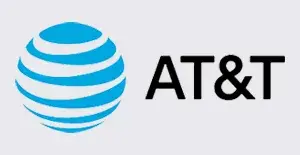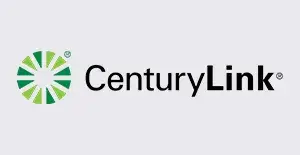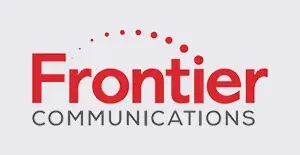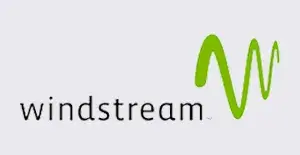About DSL internet
DSL internet is a high-speed broadband internet access that utilizes existing telephone wiring to transmit data through a DSL modem. It is the primary form of broadband internet access and is widely accessible in both rural and urban areas. DSL offers three types of connectivity- ADSL, SDSL, and VDSL- with varying speeds and bandwidth capabilities. The use of existing telephone lines makes DSL accessible to remote areas where cable infrastructure is unavailable. DSL is cost-effective compared to cellular data and faster than a dial-up connection. Additionally, DSL does not interfere with the landline phone service as phone and internet systems can function simultaneously. Overall, DSL is a reliable and accessible option for home or business users who do not require exceptionally high-speed connections.
Popular DSL internet providers
AT&T: Best DSL Internet Availability

- Price starting at: $30 per month
- Download speed: Up to 100Mbps
- Upload speed: Up to 10Mbps
- Availability of fastest speed: 40%
- Call : (844) 905-5002
AT&T offers a range of internet service options including DSL and fiber, with availability dependent on location. While the company is committed to expanding its fiber network, many customers outside of fiber service areas rely on DSL for their internet connection. Despite slower speeds compared to fiber, AT&T's DSL options remain some of the best available in terms of availability and reliability. The company offers a variety of plans with different speeds and data allowances, and none require a contract. Customers choosing AT&T for their home internet service can expect a stable connection, with consistent speeds and minimal downtime.
CenturyLink: Best DSL for Rural Areas

- Price starting at: $49 per month
- Download speed: Up to 140Mbps
- Upload speed: Up to 40Mbps
- Availability of fastest speed: 27%
- Call : (844) 340-6066
CenturyLink is considered as one of the best DSL providers for rural areas due to its extensive coverage, reliable connection, and reasonable pricing. As a well-established telecom company, CenturyLink has been expanding its fiber and cable networks, ensuring that more remote communities have access to high-speed internet. Its Kinetic internet service offers speeds of up to 100 Mbps for downloads and 10 Mbps for uploads, making it suitable for households that require high-bandwidth activities such as streaming and gaming. Moreover, CenturyLink offers different plans with varying data caps and contract terms to cater to different user needs and budgets. Overall, CenturyLink's commitment to expanding rural internet connectivity and its well-rounded service offerings make it an excellent choice for those looking for reliable and affordable DSL internet.
Frontier: Best DSL provider for Straightforward Pricing

- Price starting at: $38 per month
- Download speed: Up to 115Mbps
- Upload speed: Up to 3Mbps
- Availability of fastest speed: 10%
- Call : (844) 340-6366
Frontier Communications is a reliable DSL provider that offers straightforward pricing to its customers. With a large established DSL network available in 25 states, Frontier is an excellent choice for those who live in rural areas and have no access to fiber-optic internet. While the DSL service may be hit or miss depending on where you live, Frontier offers competitive pricing and unlimited data without any equipment fees or contracts. One of the best things about Frontier internet is its price lock guarantee for its copper DSL-based service for 24 months, ensuring that customers will not face any sudden price increases. For those who are looking for an affordable and reliable DSL provider, Frontier is an excellent choice.
Windstream: Best for fast DSL internet speeds
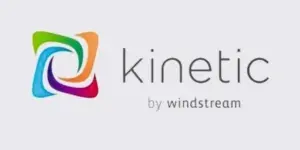
- Price starting at: $37 per month
- Download speed: Up to 232Mbps
- Upload speed: Up to 232Mbps
- Availability of fastest speed: 7%
- Call : (844) 905-5050
Windstream is a telecommunications company that offers DSL internet services to residential customers across 18 states in the United States. With approximately 14 million people covered, it is the sixth largest residential DSL provider in the country by population coverage. Windstream's DSL plans offer some of the fastest internet speeds available, making it an ideal choice for customers who prioritize speed and reliability. However, it is important to note that Windstream's customer satisfaction ratings are slightly below average, with a score of 65/100 in 2023. Despite this, Windstream's internet service is still a great option for those who want fast speeds and unlimited data without signing a long-term contract.
How DSL internet works?
Digital Subscriber Line (DSL) is a type of internet connection that utilizes the voice frequency of existing telephone lines to transmit digital data for fast internet downloads and uploads. When a user connects to the internet through DSL, the available bandwidth of the phone line is divided into two channels - one for voice communication and the other for internet data. DSL internet works by exploiting the unused bandwidth that remains within the phone line, after taking into account the voice frequency band needed to transfer human conversation. DSL technology uses modems that convert digital data into audio signals that can be transmitted over the phone line, and then reconverts these signals back into digital data at the receiving end. The speed and reach of a DSL connection depend on the user's proximity to the DSL provider's central office and the condition of the phone line used. Despite its limitations, DSL remains an effective and readily available communication tool for many users who need fast internet access at home or at work.
DSL Internet FAQ
1. What is DSL internet?
DSL (digital subscriber line) internet runs an internet signal over copper phone lines, using higher frequencies which hold more information than older dial-up connections. It was one of the first viable broadband internet options available to many people.
2. What are the advantages of DSL technology?
DSL is a surprisingly robust technology and can continue to function during a blackout, as long as you have a battery to keep your router and computer running. It is also a low-cost option.
3. What are the types of DSL?
Most DSL networks use asymmetric DSL (ADSL), which divides up frequencies and dedicates most of them toward download speeds, making it a poor choice for video chat, livestreaming, or sending large amounts of data. Other DSL types include symmetric DSL (SDSL) and rate-adaptive DSL (RADSL), which each have their own pros and cons but are not widely used in residential internet.
4. What are the limitations of DSL technology?
DSL is limited by the use of copper telephone wire, which limits its ability to scale with our online habits. It cannot keep up with other types of connections that get faster every year, like fiber and 5G. As DSL lines fall into disrepair or are abandoned by providers, keeping DSL customers connected is becoming a significant issue.
5. What are the important things to consider when getting DSL internet?
It's important to note that the maximum distance that a DSL signal can travel is just over 5 km, but most providers will place a much lower limit on this distance to maintain quality.
6. Is CenturyLink offering DSL internet?
Yes, CenturyLink is offering DSL internet with speeds of up to 140 Mbps.
